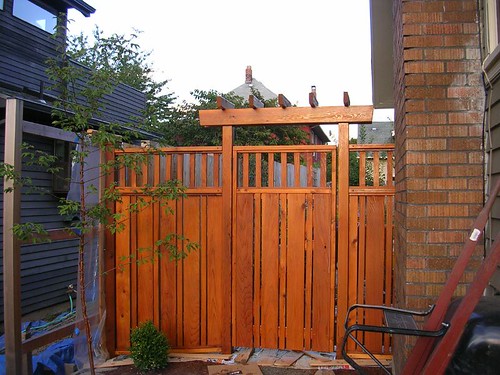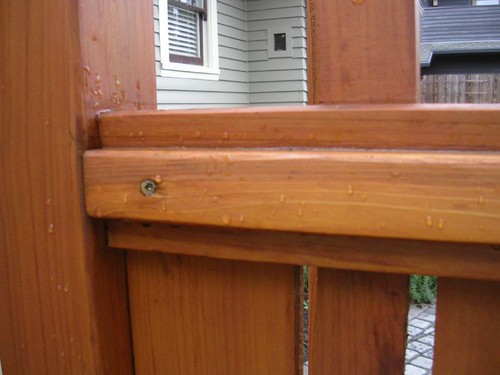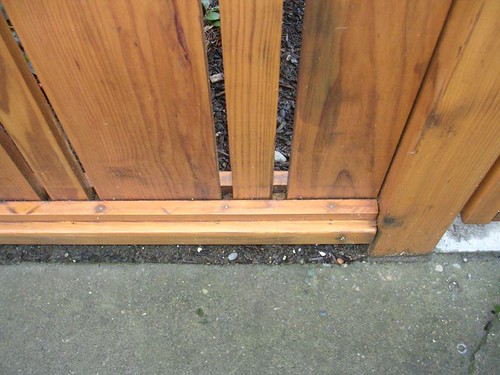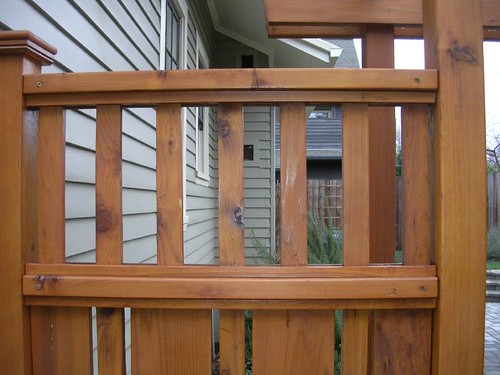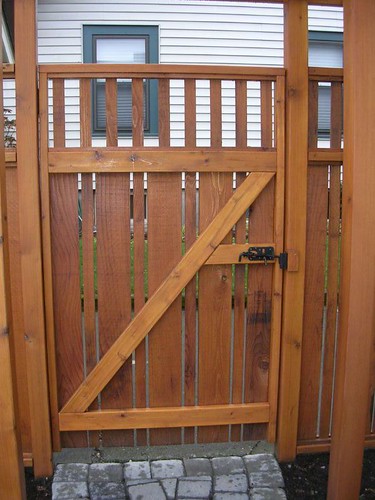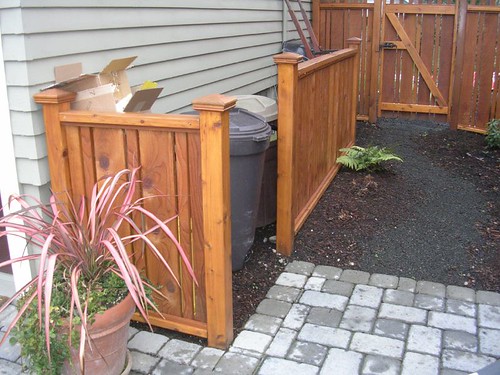The front door on my house has some nice craftsman detail to it. But since I've had the house, it's always been painted and that paint was wearing off after 15 years. Being in Oregon, I'd always suspected that there was some nice Douglas Fir underneath that paint. In April and May 2020, the pandemic provided the opportunity to take on the task of refinishing the door.
I'd watched a few videos on stripping paint using Smart Strip. So I got some of this and the paper that they sell to go on top of it to keep it from drying out. I also bought some plastic brushes and rigid plastic scrapers. It being an exterior surface on an old house, there was certainly lead paint in there so the lack of dust with stripping approach appealed.
I globbed the stripper on with a disposable paint brush, put on the paper, and waited a day or so. I was expecting it to be a sort of satisfying process where the stripper did its work and then magically the many layers of old paint just scraped right off to reveal beautiful wood grain. That sort-of happened in some areas. But mostly it was a very messy, methodical process of scraping and brushing. I did it in my driveway to contain the mess. To some extent, the cool spring weather slowed the process.
I think that I did the Smart Strip cylce at least three times: paint it on, cover it, wait, scrape with a plastic scraper and a bit with a metal paint scraper, brush with a plastic brush, then wash with water. Each time I did it, I focused more on the problema aeas. I finally figured out that in order to get the paint off of the trim that lines the tiny windows of the door and the relief areas of the door, I needed to pry them out and work on them separately with a stripper and a brush.
Once I was down to bare wood, I could still see there was white paint that tainted the appearance of the wood. So I put on my respirator and hand sanded the wood. I did this repeatedly and thought it was looking pretty good. Then I asked my 11 year old what he thought, and he said, "you can still see paint, Dad." More sanding ensued.
The door had various gaps in places where different pieces of wood intersect. Perhaps the original glue had come out. After sanding the trim pieces, they didn't fit back into the door seamlessly. There were some gaps where they came together with each other. So I used black epoxy wood filler. I like the look of this on reclaimed fir. That's what I used on my kitchen table. It goes with the black that bleeds from old nails.
To finish the door I used Benite wood conditioner and then a couple coats of PPG Proluxe Door and Window Finish Clear Satin. This type of Cetol product worked great on my fence and looked great on the door.













.jpg)






